A TV host was left stunned when he was told he had skin cancer by a dermatologist live on-air.
Mike Jerrick, co-host of Good Day Philadelphia on Fox News, received the devastating news he had skin cancer when a dermatologist came on the show and spotted a concerning cancerous-looking spot on his elbow – and ‘blurted it out’ unexpectedly.
Eagle-eyed doctor Joanna Walker, who works at the Tara Miller Melanoma Center at the University of Pennsylvania, told Jerrick that the spot has ‘all the features of the most common type of skin cancer.’
Skin cancer stands as the most common cancer in the United States with one in five likely to develop the condition by the age of 70.
Around two people die of the cancer in the US every hour, however, the Skin Cancer Foundation states the survival rate for melanoma is 99 percent when detected early.
“So this is a basal cell skin cancer,” Dr Walker said while looking closely at his arm, to which a shocked Jerrick asked: “It is?”
However, fortunately it appears he has a ‘slow growing’ type that is ‘very treatable.’
She told Jerrick he could have the spot removed to which the bewildered host replied: “What are you gonna do? Burn it off?”
“This one probably needs to be cut and stitched,” she said.
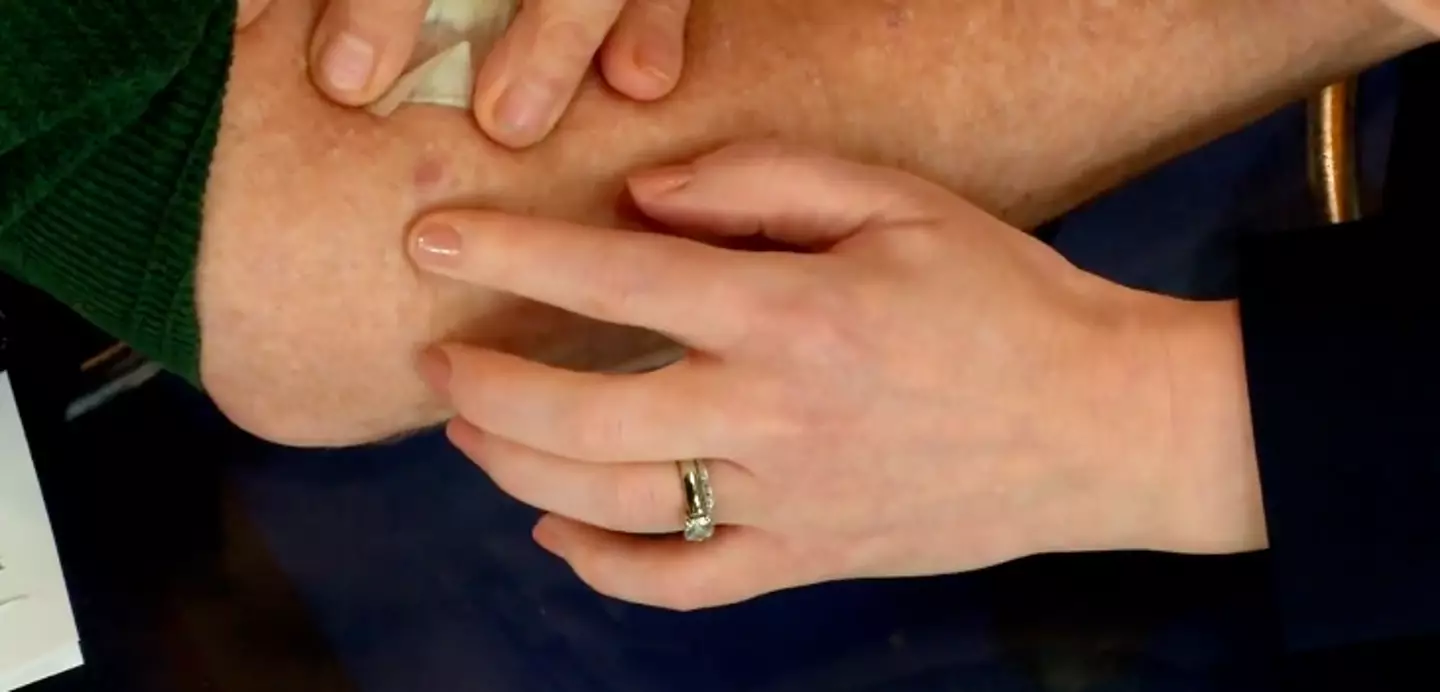

The doctor pointed out the melanoma on his arm (Fox29)
“What!” Jerrick said stunned. “And then stitch me up?”
Explaining further, Dr Walker said: “So this one is a very slow growing type of skin cancer, it’s not gonna spread to anywhere else on your body.
“But it needs to be removed so it doesn’t keep growing and taking over normal skin.”
“Oh, good lord,” Jerrick responded before revealing to Fox News viewers that the diagnosis, especially live on air, was a complete shock.
“I did say that we should have had her bring her [micro]scope because I wanted to check out of couple of things on my arms, so that part was planned,” he said. “But I never really thought it was going to be skin cancer.”


The host was shocked by the revelation (Fox29)
Co-host Alex Holley then asked the doc what Jerrick should do next and if he should book for an appointment to which Dr Walker said he should.
“When she blurted it out, I didn’t get alarmed or anything,” Jerrick said. “It was just like, “Oh dang, I should have done this a long time ago’.”
“I should be fine,. She’ll just suture me up and I’ll be on my way.”
The outlet has since confirmed Jerrick has an appointment to have the spot removed on Friday.
According to the Mayo Clinic, basal cell carcinoma can appear as a skin-colored or pink bump on white skin, or brown or glossy black on brown and black skin, and occurs in places that are most exposed to the sun like the head and neck.
Avoiding the sun, tanning beds and using sunscreen can help to prevent this type of skin cancer.
Featured Image Credit: Fox29


A doctor has revealed the six common cancer symptoms everyone under the age of 50 should be aware of.
Although the risk of cancer increases as we get older, with the average age at diagnosis around 68, doctors have been reporting a dramatic rise of cases in the under 50s.
According to researchers at Brigham and Women’s Hospital at Boston, cancer among the younger cohort may be foreshadowing an ’emerging pandemic,’ reports Cancer Center.
Of the types on the rise include breast cancer, lymphoma and colorectal cancer, as well as testicular, kidney and pancreatic, and doctors don’t know why.
That’s according to Dr Paul Oberstein, a professor of medicine at New York University, who took to the New York Post to reveal the six emerging symptoms that young people should look out for as a possible early sign of the disease.
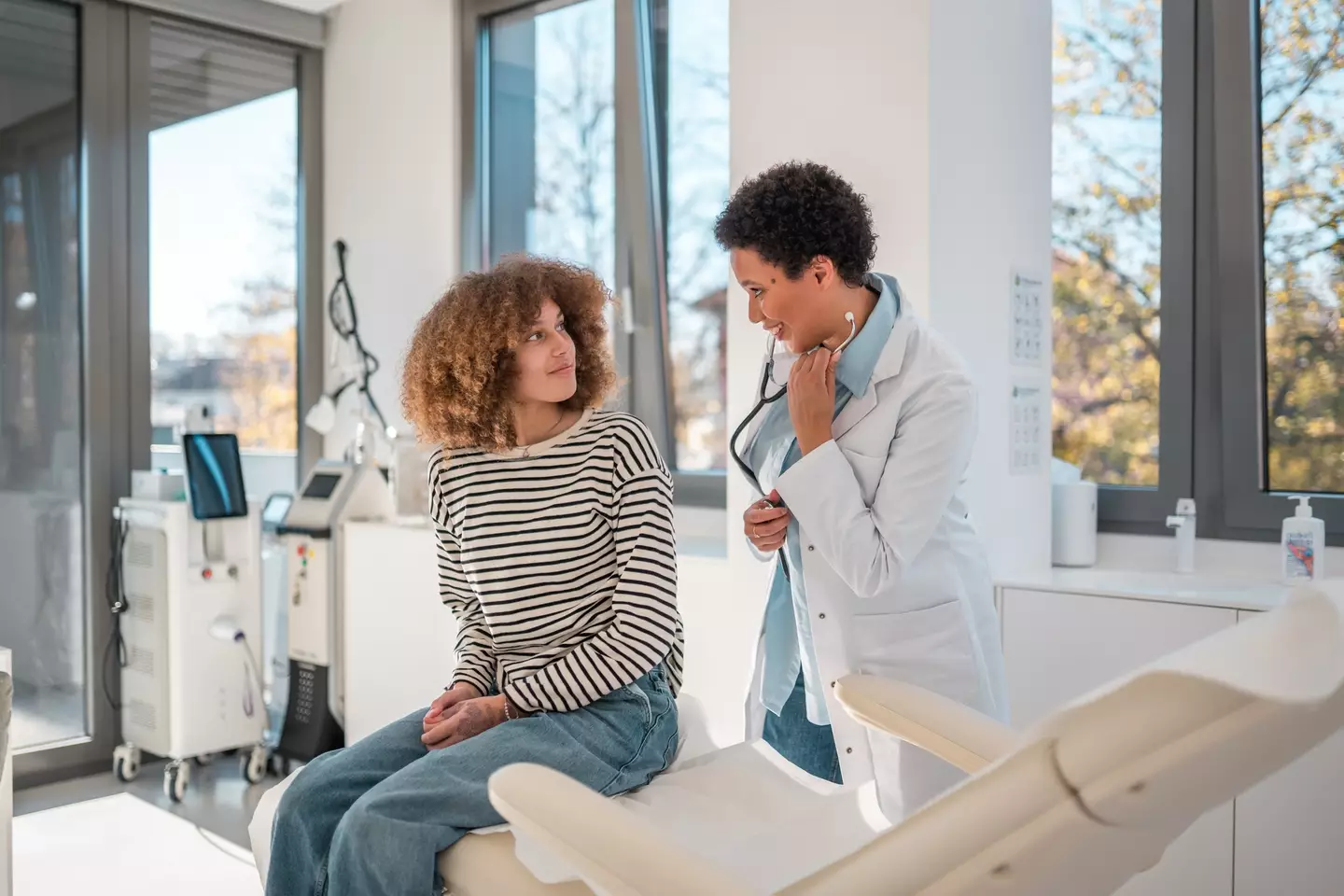

Cancer is on the rise for people under 50 (Getty Images)
Weight loss
Losing weight deliberately through diet and exercise is a different ballgame to those who suddenly drop the pounds without any material change to their lifestyle.
Dr Oberstein said a common symptom among cancer patients is unintentional weight loss as well as feeling full quickly after eating, a change in energy levels and/or changes to sleep patterns.
“These are very general things, and usually they don’t mean cancer, but sometimes they could be the first sign that something is wrong,” he said. “The most prominent of these symptoms is unintentional weight loss. Usually, people don’t lose weight without effort.”


Sudden weight loss without effort can be a concern (Getty Images)
Night sweats and chills
On the subject of sleep, some nighttime changes like night sweats or unexplained chills ‘could be a sign of something brewing in the lymph system, such as lymphoma.’
The doc says these changes could also ‘signal something else’ and people should be particularly mindful of any swelling in the glands under the armpits or where the lymph nodes are.
Bowel changes
The doc said there are some bathroom abnormalities that could be a red flag for possible colon cancer.
He wrote: “If the stool looks different — it’s darker, a different caliber or blood is present — that’s a concern.”
“We’ve tracked the colorectal cancer increase in the US and around the world over the last decade. We think the rise is related to environmental and dietary changes, but we have not yet pinpointed the exact cause,” he added.


Bowel changes is another one to look out for (Getty Images)
Lumps
Breast cancer is one of the most common cancers in people under 50, accounting for about 30 percent of all new female cancers every year in the US.
Rates are on the rise overall (by one percent) and ‘a little steeper’ among women under the age of 50 (1.4 percent), reports the American Cancer Society, with trends suggesting excess body weight, not having children or having a child after the age of 30.
Dr Oberstein says the clearest indicator is lumps, changes in skin color or breast discharge.
Another common increase is testicular cancer, which can be caught similarly from feeling a lump or abnormality in the testicles, which may or may not be painful.
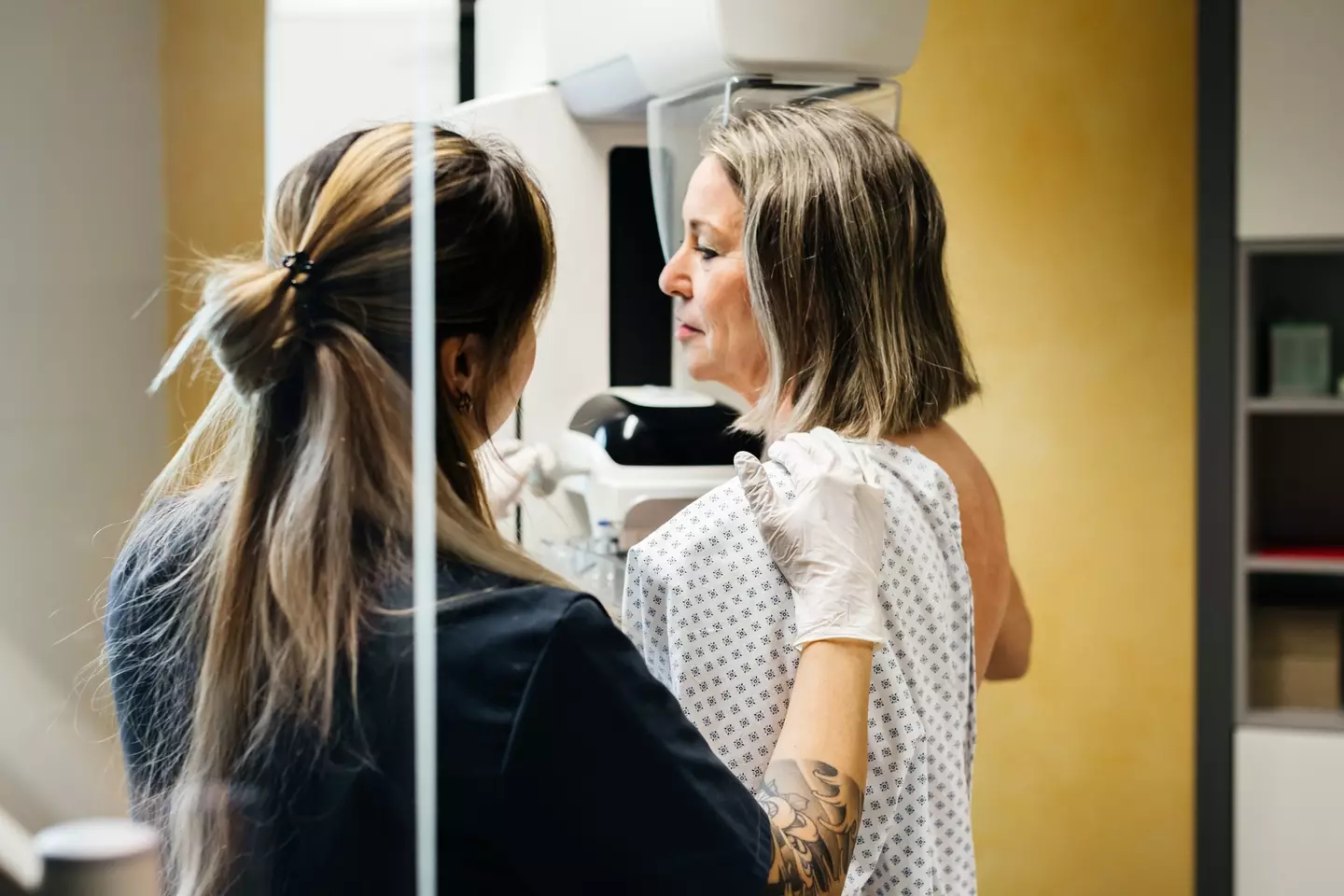

Breast cancer can be detected by abnormalities like lumps or a change in skin color (Getty Images)
Bleeding
Blood can also show up in various concerning places.
“For example, blood in the urine can be an early sign of a problem in the bladder or kidneys,” the doctor continued. “Vaginal bleeding or bleeding after intercourse could indicate cervical cancer or potentially even endometrial cancer and should be checked out.”
The good news, he says, is that cervical cancer has become less common in younger adults.
Skin changes
Cancer of the skin (melanoma) is the most common of all cancers in the US.
Dr Oberstein warns early signs can be caught through abnormalities in the skin with anything new or changing, which he says should prompt a discussion with a healthcare professional.
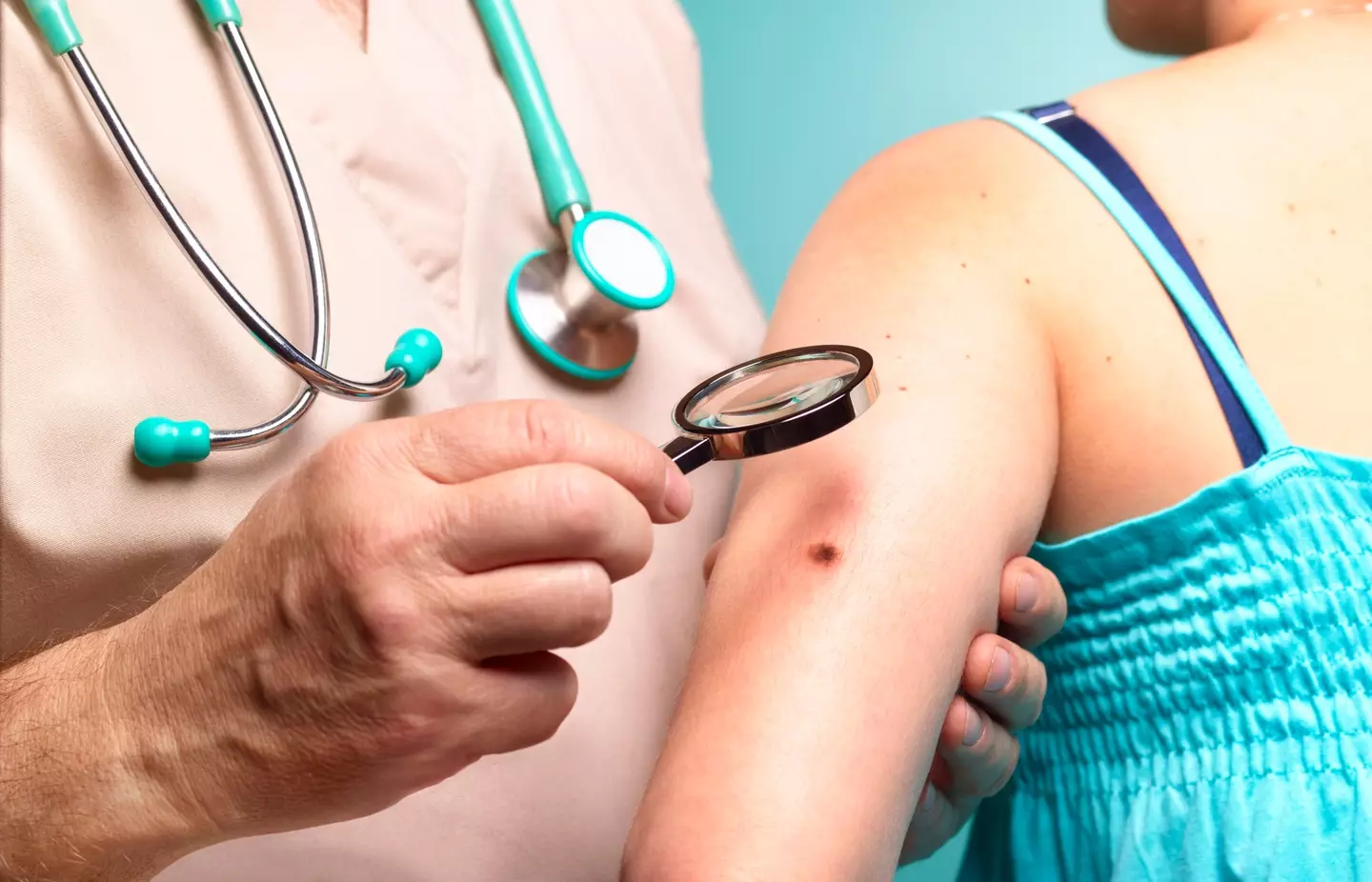

Melanoma is the most common cancer in the US (Getty Images)
How to lower cancer risk
There are ways to mitigate against the risk of cancer, by improving diet, quitting smoking and increasing exercise, the doctor states.
Doctor’s appointments for any concerning systems and cancer screening are also at the top of the list, he adds.
Women under the age of 50 can book for a mammogram to check for breast cancer and a pap smear to screen for cervical cancer.
Meanwhile, anyone aged 45 and over can book a colonoscopy for colon cancer and a prostate cancer screening can also be recommended.
For those with family history of cancer, screening for thyroid and blood cancers can also be booked.
Featured Image Credit: Getty Images/Tom Werner
Topics: Cancer, Health, Breast cancer, US News
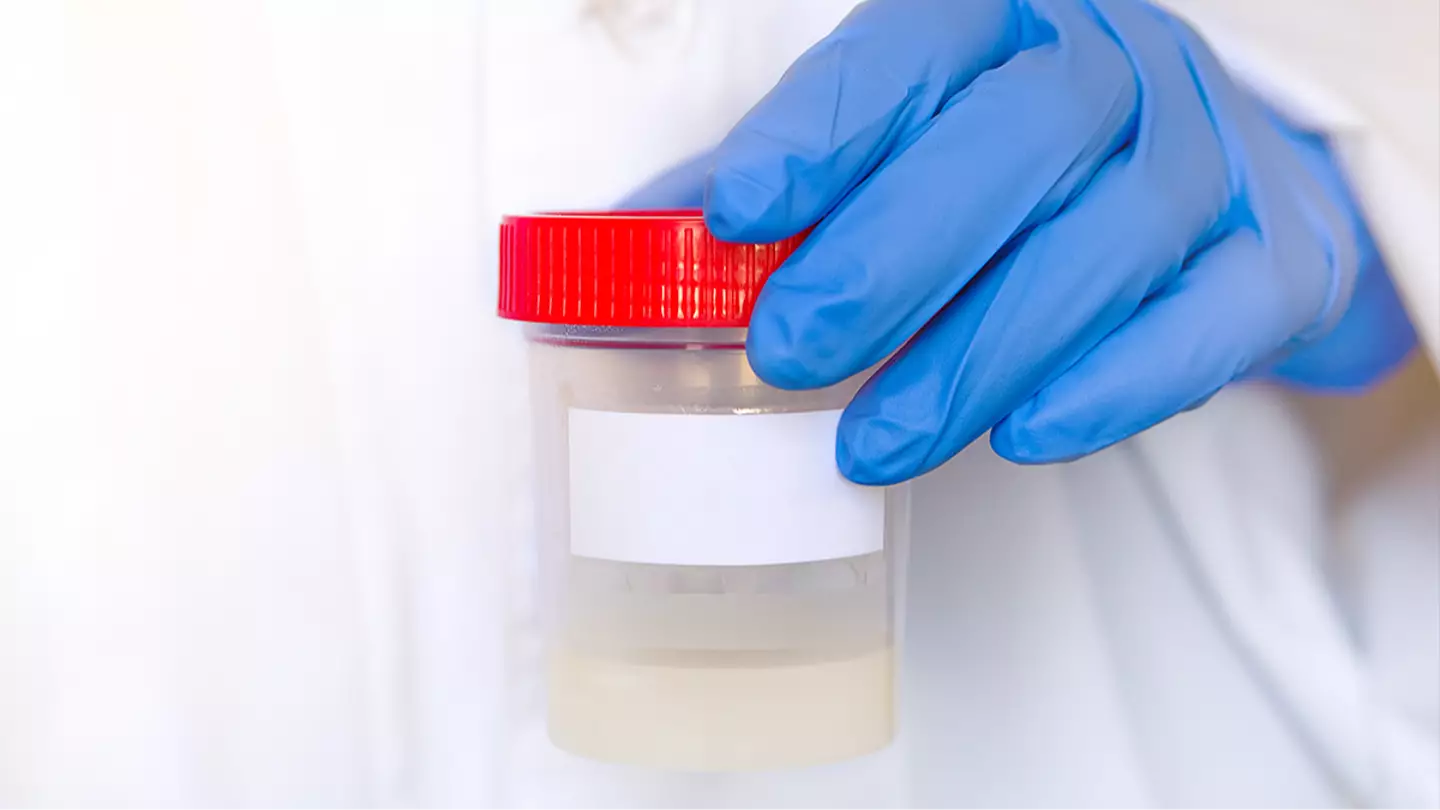

A man who was unaware that he had a rare cancer-carrying mutation donated sperm, which resulted in the births of 67 children.
Now, it has been revealed that 10 of those children have since been diagnosed with cancer, with 20 also having been found to have the same gene variant.
The case initially came to the forefront when two families contacted the fertility clinics to reveal that their children had developed cancer linked to a rare genetic variant called TP53.
According to Medline Plus, this variant can cause a genetic condition called Li-Fraumeni syndrome (LFS), which can increase the risk of developing particular cancers like leukaemia.
Those with the gene variant are advised to receive MRI body scans and scans of the brain regularly throughout their life.


This incident has resulted in questioning around the number of allowed donations (Getty Stock Image)
However, this is relatively new information as it was not known at the time of the donations, the majority of which were in 2008.
The Guardian also reported that the man was considered to be in good health.
Dr Edwige Kasper, a biologist from Rouen University Hospital in France, said: “I analysed the variant using population and patient databases, computer prediction tools and the results of functional trials and came to the conclusion that the variant was probably cancer-causing and that children born from this donor should receive genetic counselling.”
There is currently no international standard limit for sperm donation, but the bank where the man made the donations, The European Sperm Bank, has a limit of 75 per donor.
In the case of this donor, they added that more than 67 children had been conceived; however, it was not in their policy to disclose exact numbers.
They also said that the relevant clinics had been alerted.
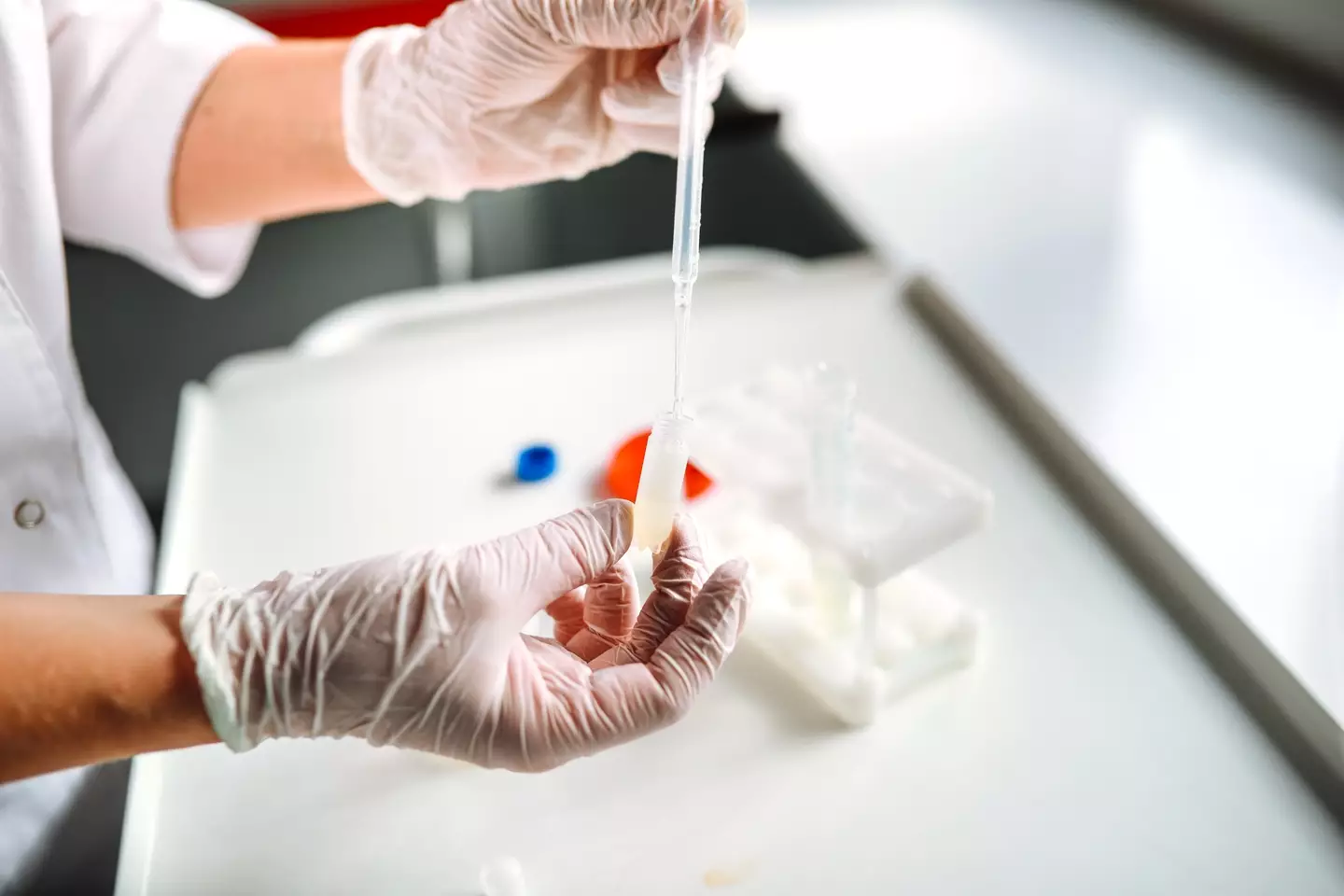

The man was unaware that he carried a cancer-causing gene (Getty Stock Image)
However, this case, resulting in many children being born between 2008 and as recent as 2015, has raised some concerns about the internationally agreed limits on the use of donor sperm.
Kasper spoke about the immediate need for change to prevent issues like this in the future, adding: “We need to have a European limit on the number of births or families for a single donor.
“We can’t do whole-genome sequencing for all sperm donors – I’m not arguing for that. But this is the abnormal dissemination of genetic disease. Not every man has 75 children across Europe.”
Nicky Hudson, a professor at De Montfort University in Leicester, reiterated that this particular incident has highlighted the risks associated with moving sperm across borders.
She said: “The important issues at stake here relate to the large number of affected children – which would be limited if only used within one country according to local limits – and the challenge of tracing the families, who can now span multiple countries.


At least 67 children were conceived with this man’s sperm (Getty stock images)
“Whilst these kinds of cases have thankfully been rare, we need to consider ways to limit the possibility of this scenario becoming more frequent in future by coordinating international practice. At the very least we need better systems for tracking donor usage and of informing recipients of this.”
A spokesperson for The European Sperm Bank told The Guardian that they were ‘deeply affected by this case’, adding that the donor had been extensively tested; however, ‘it is scientifically simply not possible to detect disease-causing mutations in a person’s gene pool if you don’t know what you are looking for’.
They added: “We welcome continued dialogue on setting an internationally mandated family limit and have advocated for this on several occasions. This is also why we have proactively implemented our own international limit of 75 families per donor.”
UNILAD has contacted The European Sperm Bank for further comment.
Featured Image Credit: Getty Stock Image
Topics: Cancer, Health, News, World News


A disturbing simulation has shown just how a person dies from cancer.
An estimated 618,120 people will die of cancer in the US this year, with lung cancer being responsible for the most deaths followed by colorectal cancer and pancreatic cancer according to the NIH.
However, while cancer can certainly lead in death, it’s not necessarily the disease that causes someone to die, according to Dr Paulien Moyaert, with the cancer creating a host of taxing side effects on the body.
Explaining the grim process, the medic has unveiled a horrifying 3D simulation of the process on YouTube which walks through the disturbing stages of how cancer might kill you.
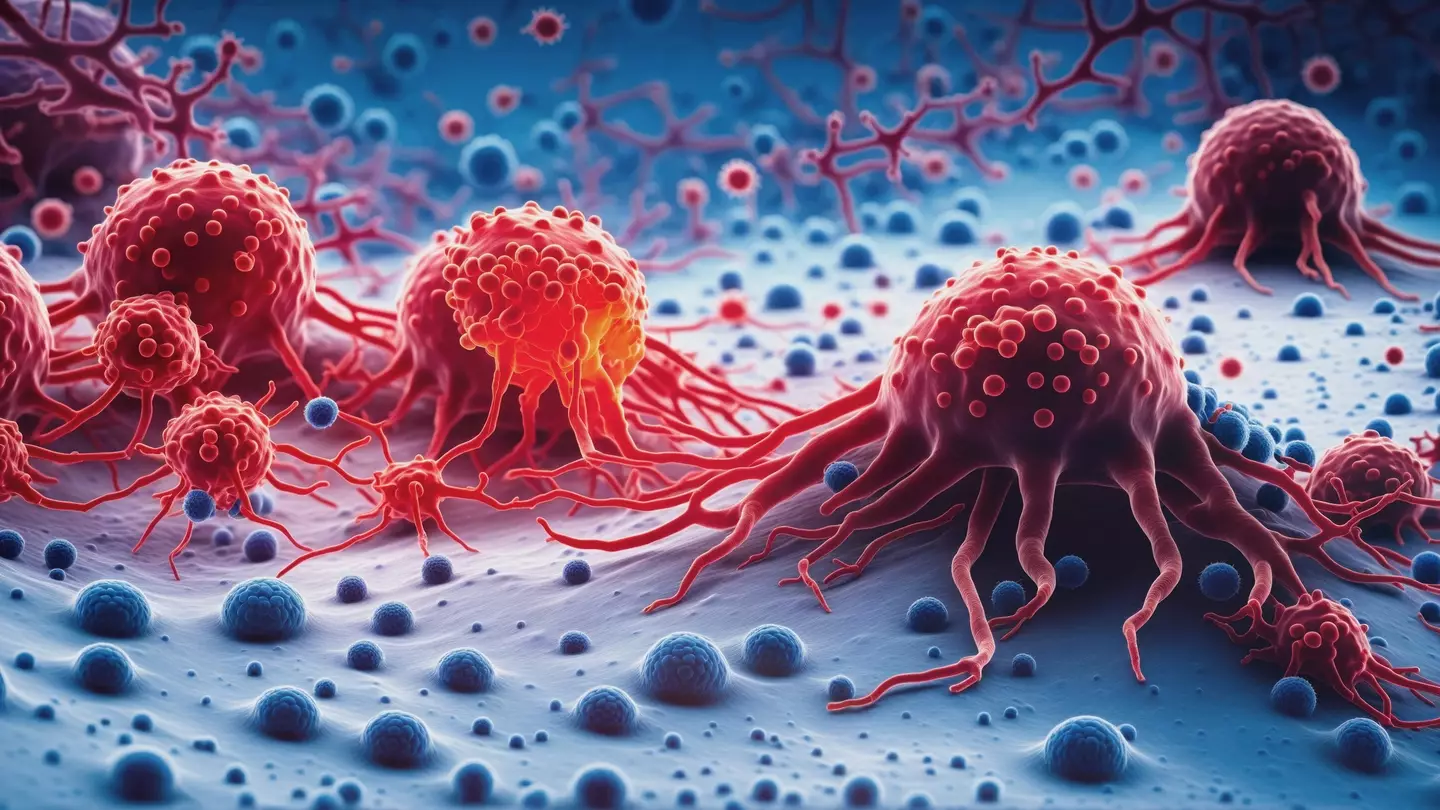

It all starts with a single cell (Getty Images)
Metastatic cancer
The almost four-minute-long video kicks off by explaining metastatic cancer, described as ‘the most lethal’ as it involves a single cell breaking off, migrating and forming a tumor.
This tumor can then target any organ and prevent it from functioning.
Organ failure and pancreatic cancer
As an example, the scientific video shows how the cancer can grow and lead to organ failure – like if it goes into the digestive system, it can prevent digestion and the absorption of food.
A tumor can also block faeces from being expelled, which can perforate and quickly turn fatal without surgery.
Another example the simulation gives is when cancer affects the pancreatic ducts, horrifyingly causing the pancreas to ‘digest itself.’
Pancreatic cancer is therefore considered one of the most painful and deadliest types of cancer.
Lung cancer
When cancer is in the lungs, the simulation reveals patients can die from asphyxiation, where there’s not enough oxygen around the body.
This is the most common cause of death in lung cancer cases, the video reveals.
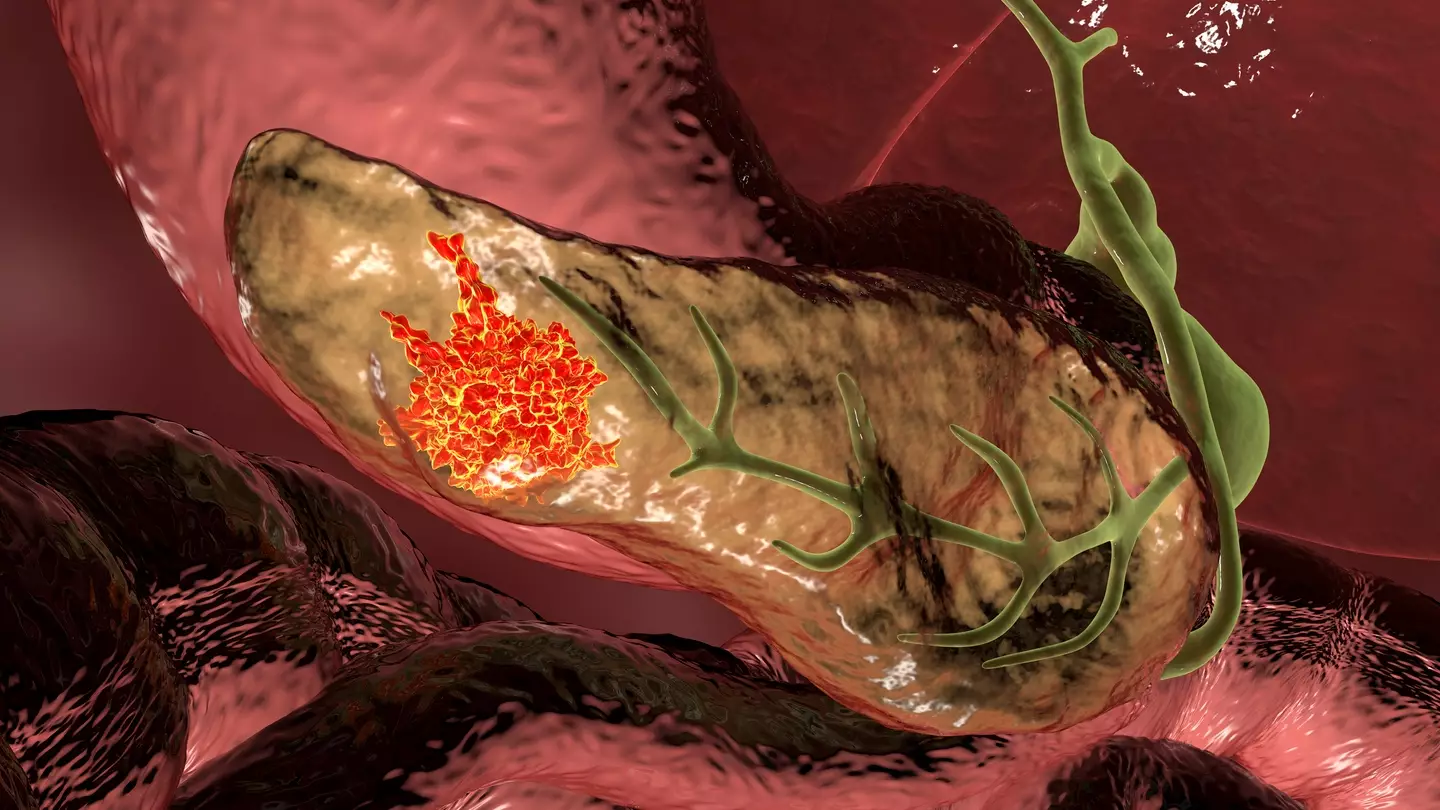

Pancreatic cancer is considered one of the most painful types (Getty Images)
Infection
The second most common cause of death comes from infections.
“Having cancer impairs immunity,” the explainer continues, “and chemotherapy compounds the problem by suppressing the bone marrow – the factory where white blood cells are produced.”
Bone marrow
Not only can bone marrow be impaired by chemotherapy, but the ‘infiltration of cancer cells’ as well.
“When cancer grows in the bone marrow, there will eventually be inadequate bone healthy bone marrow to make blood cells,” the simulation shows.
Implications for affected bone marrow include anemia, a drop in white blood cells – which typically fight infection and keep bacteria under a control – and a decrease in platelets which prevents the body from controlling any abnormal bleeding.
Cachexia
The video explains cachexia involves ‘wasting’ away – where toxins released by the cancer cells suppress appetite and affect the digestion of food.
This is why many cancer patients suffer rapid weight and muscle loss.
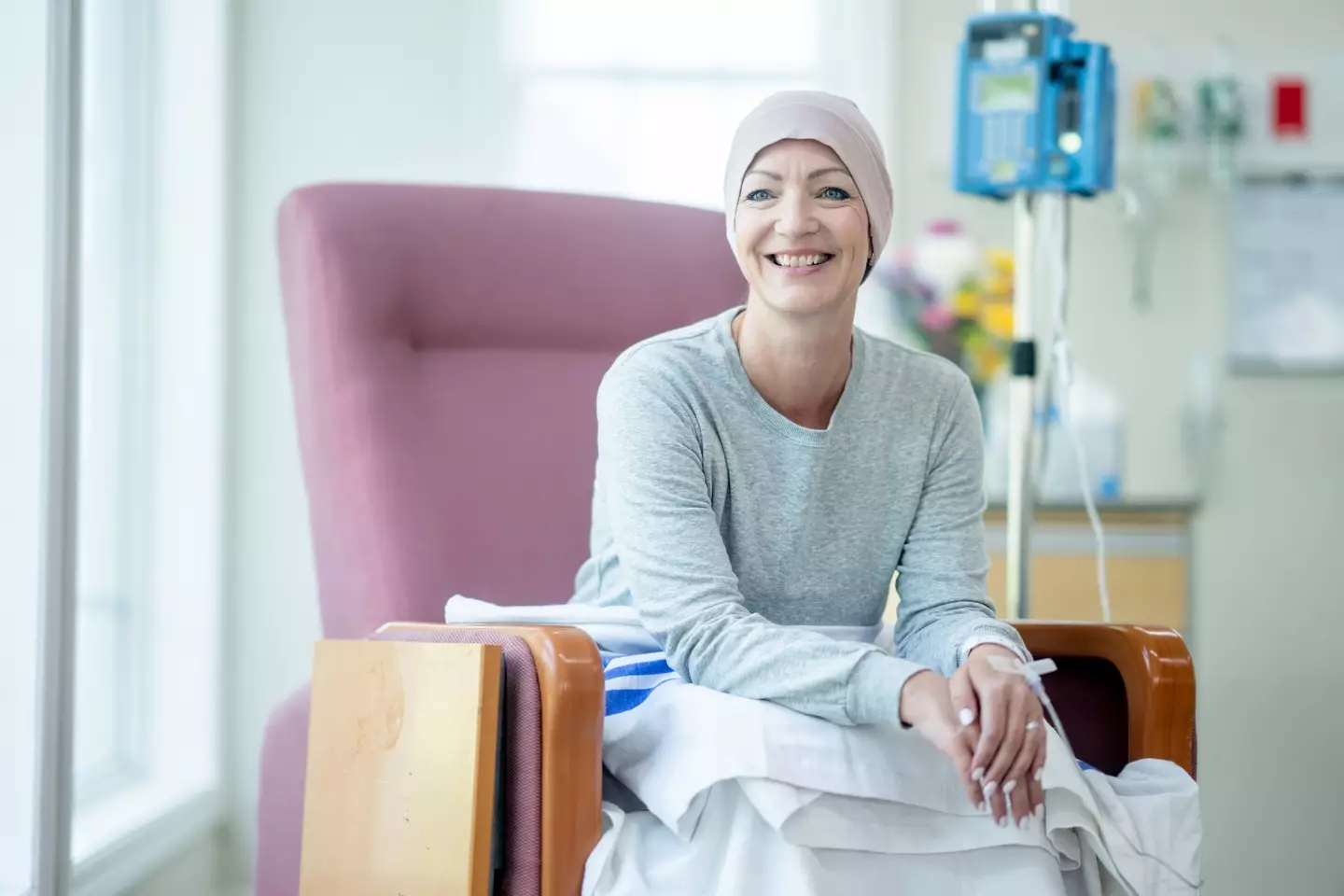

It explains why cancer patients drop a lot of weight in a short space of time (Getty Images)
This alone can prove fatal, as the video explains: “Cachexia is estimated to occur in 50 percent of all cancer patients and is thought to directly cause up to 30 percent of cancer deaths because of heart of respiratory failure related to muscle loss.”
It can also be attributed to 50 percent of deaths in patients with gastrointestinal tract cancers and up to 80 percent of deaths in patients with advanced pancreatic cancer.
Treatment can control it for ‘a long time’ but if the cancer continues to grow, ‘it can become too much for the body to cope with.’
At this stage, patients might be advised to focus on comfort and the quality of life they have left.
“No one with cancer should die in pain,” it adds.
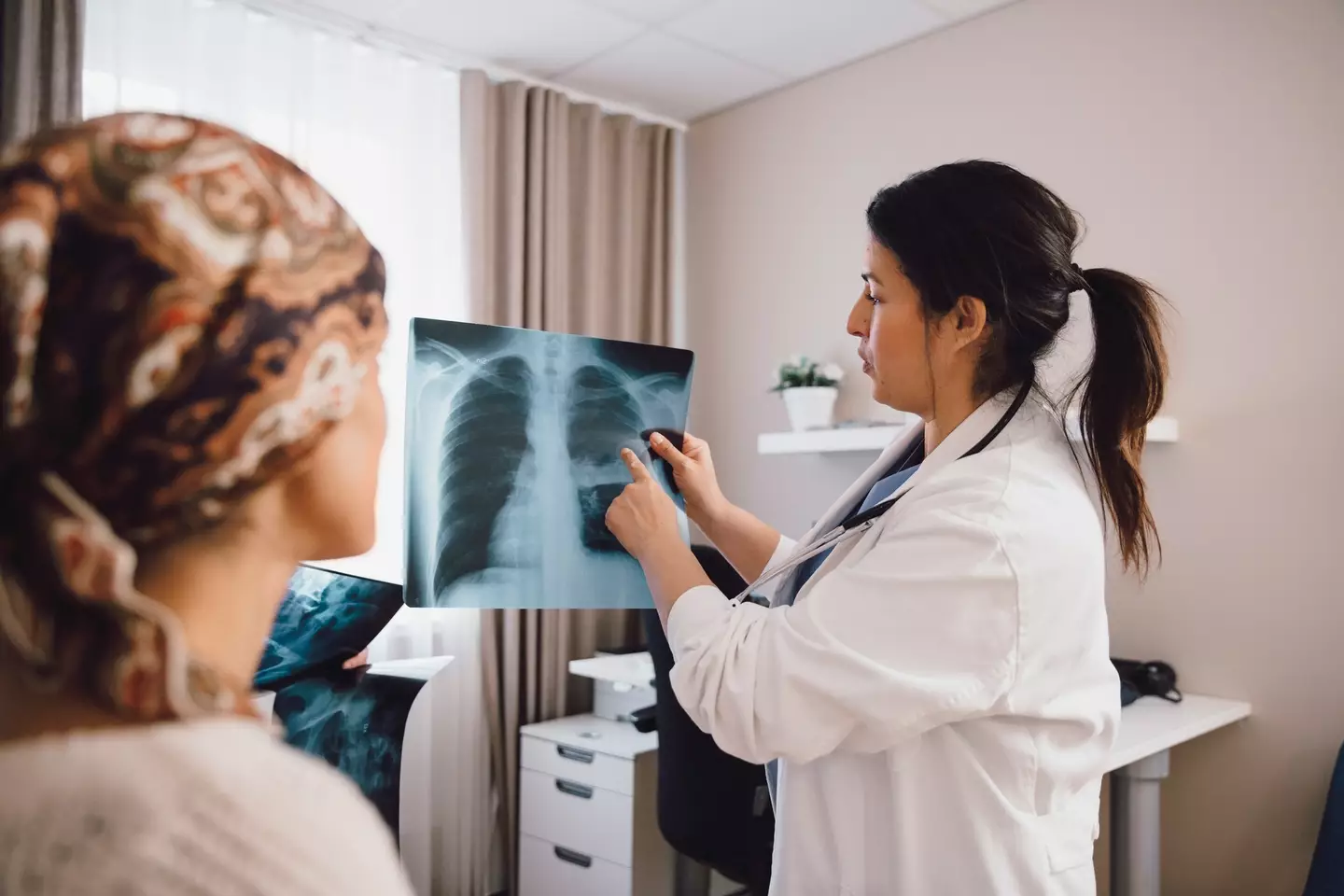

Surgery can help but it is difficult (Getty Images)
Why is surgery difficult?
The simulation then answers why surgery to treat or expel cancer is particularly difficult.
It explains: “Because the major organs are so vital for life, these are all parts of the body that are had to operate on. Assuming the operation is successful and you remove the tumor without lasting damage to the organ, the tumor may grow back.
“All it takes is a few cells of the original tumor remaining in the body.”
That’s why chemo as well as surgery is vital to treat the disease.
If you’ve been affected by any of these issues and want to speak to someone in confidence, contact the American Cancer Society on 1-800-227-2345 or via their live chat feature, available 24/7 every day of the year.
Featured Image Credit: YouTube/@dr.paulinemoyaert


There are symptoms of cancer that can occasionally be clear, but sometimes, they can be easily masked, and two things that keep you up at night could be due to an underlying health issue.
There are a wide array of different cancers that can impact a person, but being able to spot some of the symptoms in both the early and late stages can be difficult.
To make things even more concerning, the symptoms that can arise are often impacted by the location and type of cancer that is affecting you.
If you have concerns that you may have developed a form of cancer it is always worth seeking out help and advice from a healthcare professional.
But it is also very common to assume things will simply get better or that the thing causing you issues will simply go away on its own.
Cancer Research UK has highlighted two symptoms that occur when trying to sleep that may be worth speaking to a doctor about as they can be signs of cancer.


Insomnia can be caused by many things but can also be a symptom of certain types of cancer(Getty Stock Image)
Night sweats
The health service noted that while there are many potential and simple reasons for night sweats – such as room temperature, cuddling or a change in weather – a person shouldn’t shy away from getting checked if they are regularly enduring ‘very heavy, drenching night sweats’ or unexplained fevers.
These can be indicators of conditions such as lymphoma.
The organization continued: “If you regularly wake up with soaking wet sheets, you should get it checked by a GP. Night sweats are when you sweat so much that your night clothes and bedding are soaking wet, even though where you’re sleeping is cool.”


The charity pointed out the importance of getting checked for cancer if you suffer from either night sweats or insomnia
Insomnia
Like night sweats, insomnia can be rather common and caused by a whole host of things, including things as simple as stress or anxiety.
However, Cancer Research UK also points out that insomnia could signal the presence of cancer.
The charity said: “If you often have insomnia, it can interfere with everyday life. You may feel very tired and have low energy.
“You might also have poor concentration, and irritability, and may feel you cannot cope.”
The organization also gave advice on when an individual should get themselves checked in person by a professional and the importance of doing so.
They said: “It’s important to be aware of what is normal for you and speak to your doctor if you notice any unusual changes or something that won’t go away. This can help to diagnose cancer at an early stage, when treatment is more likely to be successful.”



